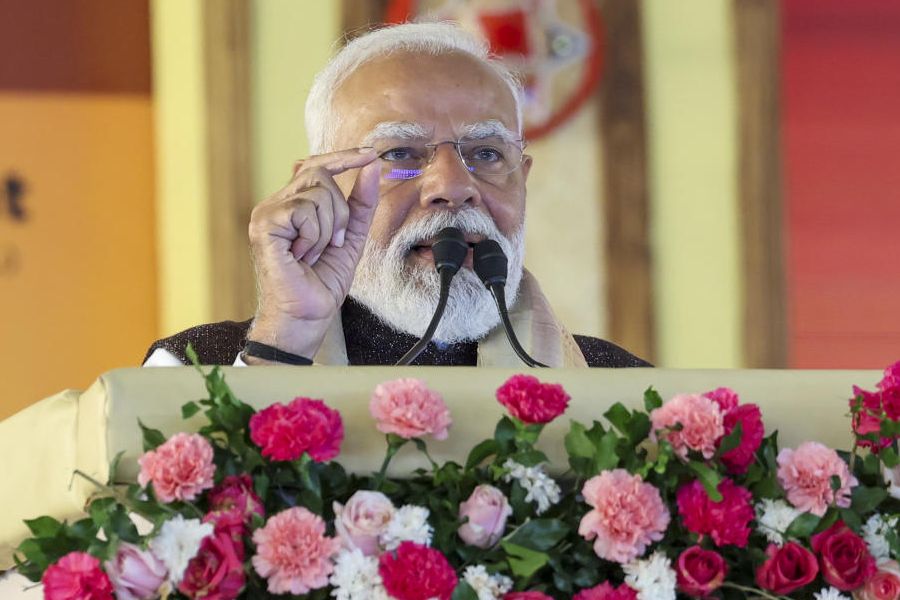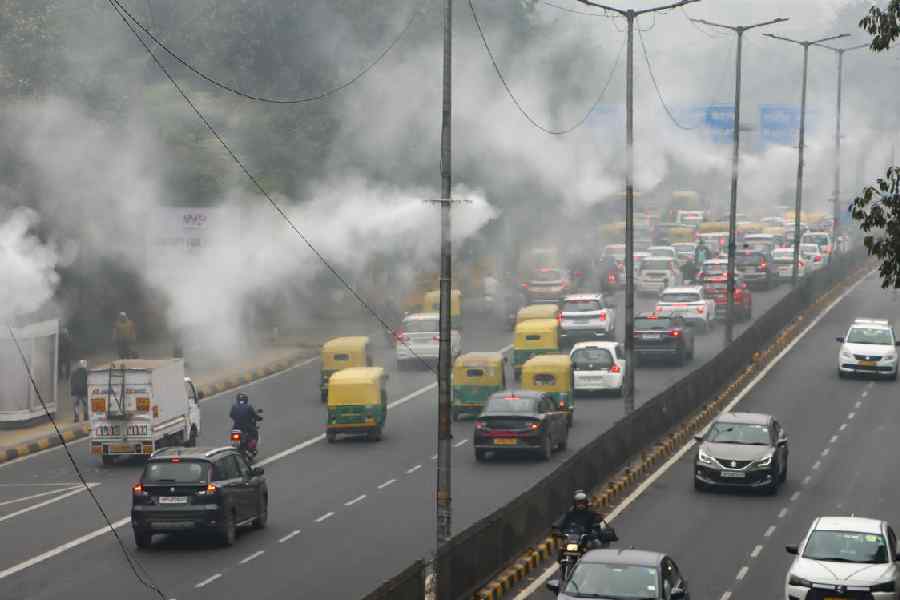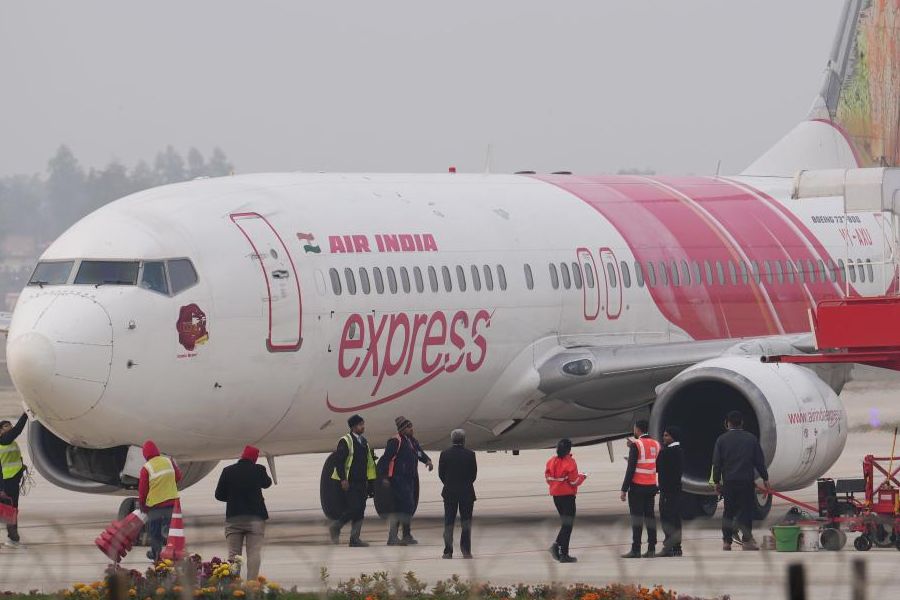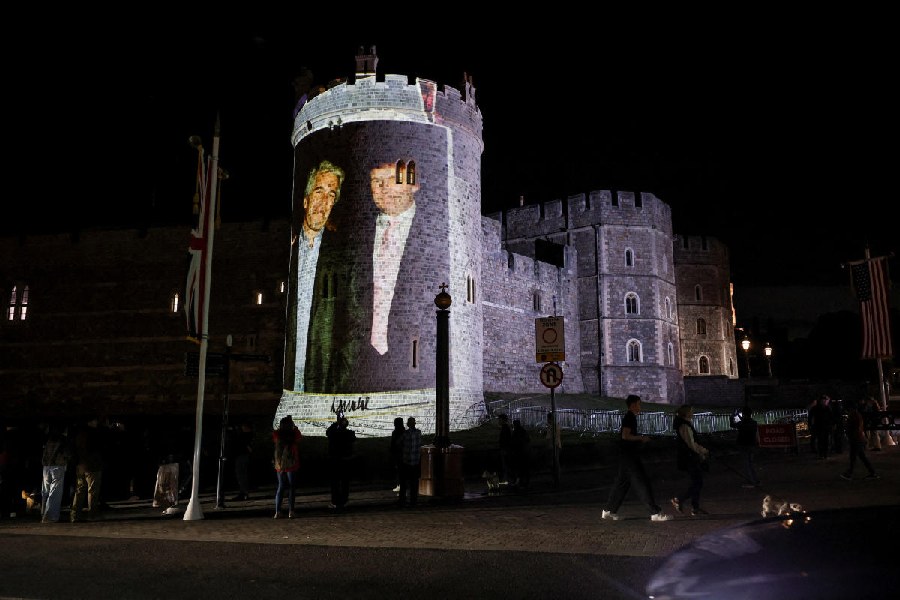 |
| Actor Hrithik Roshan at Dadasaheb Phalke’s birth anniversary celebrations in Mumbai on Tuesday. (AFP) |
Mumbai, April 30: Dadasaheb Phalke’s family has demanded that the Bharat Ratna be bestowed posthumously on the father of Indian cinema, a week before Bollywood marks its centenary on May 3.
The demand comes ahead of Dadasaheb’s 143rd birth anniversary on April 30 and days before Raja Harishchandra, the first full-length Indian feature film directed and produced by him, celebrates 100 years of its release.
Dadasaheb’s grandson, Chandrashekhar Pusalkar, has pitched for a similar honour for grandmother Saraswatibai, who was deeply involved with the making of Raja Harishchandra.
Bollywood is scheduled to mark its centenary with the release of Bombay Talkies, a series of four short films directed by Karan Johar, Zoya Akhtar, Dibakar Banerjee and Anurag Kashyap.
Speaking to The Telegraph last week, Chandrashekhar said: “We have made this demand several times. But I think the centenary year is perhaps the best way to recognise Dadasaheb’s contribution to Indian cinema with a Bharat Ratna. We would like a similar honour for my grandmother, Saraswatibai Phalke.”
While Dadasaheb was busy with the creative aspects of Raja Harishchandra, it was Saraswatibai who ensured that film production went smoothly. She helped with processing films in chemicals and perforated raw film sheets. This was in addition to caring for nine children and cooking for the entire film unit.
“We would be happy if Saraswatibai’s contribution is recognised in some way. At least, an award in her name should be given to the best female director or producer,” Chandrashekhar, the 61-year-old son of Dadasaheb’s daughter Vrida Pusalkar, said.
He said that in April 2011 chief minister Prithviraj Chavan had promised to set up a memorial, an academy and a museum after the film pioneer, but the promises had remained unfulfilled.
“The government gives away the Dadasaheb Phalke award, but no family member is invited for it. Dadasaheb’s bungalows, where he filmed and died, have not been recognised as heritage,” Chandrashekhar said.
“The Ford car he used to transport his crew in was found in poor condition in a garage in Nashik. So there is a lot the government needs to do but I am keeping my fingers crossed.”
Dadasaheb put all his money into filmmaking and had little left by the time Raja Harishchandra marked 25 years of its release. “When the film completed 25 years, Dadasaheb was invited for a celebration in Mumbai on May 7, 1939,” the grandson said.
“He quietly sat at the back of the auditorium until V. Shantaram invited him on to the dais. Prithviraj Kapoor held his hand and walked him to the stage. They presented him a purse of Rs 5,000.”
Chandrashekhar said his grandfather used the money to build a British-style bungalow in Nashik, where he passed away in 1944. However, nothing remains of the bungalow.
“It was redeveloped by Prabhakar Phalke, another grandson, in 2002. A three-storey building stands there now. He has named it Hind Cine Janakashram to commemorate that this was the house where the father of Indian cinema lived,” said Chandrashekhar, whose mother died in 2006 at their Mahim house.
The rented bungalow Dadasaheb stayed at between 1914 and 1922 still survives on Dadasaheb Phalke Road in Nashik.











